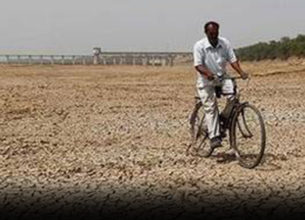HEAVY METALS CONTAMINATING INDIA’S RIVERS
12, Dec 2019

Prelims level : Pollution & Waste Management
Mains level : GS-III Conservation, Environmental Pollution and Degradation, Environmental Impact Assessment.
Why in News?
- Recent samples taken from two-thirds of the water quality stations spanning India’s major rivers showed contamination by one or more heavy metals, exceeding safe limits set by the Bureau of Indian Standards.
- The findings are part of a report, which is the third edition of an exercise conducted by the Central Water Commission (CWC) from May 2014 to April 2018.
About Central Water Commission (CWC):
- Central Water Commission is a premier Technical Organization of India in the field of Water Resources.
- It is presently functioning as an attached office of the Ministry of Jal Shakti, Department of Water Resources, River Development and Ganga Rejuvenation, Government of India.
- CWC is headed by a Chairman, with the status of Ex-Officio Secretary to the Government of India.
- The Commission is entrusted with the general responsibilities of initiating, coordinating and furthering in consultation of the State Governments concerned, schemes for control, conservation and utilization of water resources throughout the country, for purpose of Flood Control, Irrigation, Navigation, Drinking Water Supply and Water Power Development.
- It also undertakes the investigations, construction and execution of any such schemes as required. The work of the Commission is divided among 3 wings namely, Designs and Research (D&R) Wing, River Management (RM) Wing and Water Planning and Projects (WP&P) Wing. Each wing is placed under the charge of a full-time Member with the status of Ex-Officio Additional Secretary to the Government of India and comprising of number of Organizations responsible for the disposal of tasks and duties falling within their assigned scope of functions.
Stats of the Report:
- Samples from only one-third of water quality stations were safe. The rest, or 287 (65%) of the 442 sampled, were polluted by heavy metals. Samples from 101 stations had contamination by two metals; six stations saw contamination by three metals.
- Iron emerged as the most common contaminant with 156 of the sampled sites registering levels of the metal above safe limits.
- None of the sites registered arsenic levels above the safe limit.
- Not all the rivers are equally sampled. Several rivers have only been sampled at a single site whereas others such as the Ganga, the Yamuna and the Godavari are sampled at multiple sites.
- Marked variation was found in contamination levels depending on the season.
- For instance, iron contamination was persistent through most of the Ganga during monsoon but dipped significantly during the non-monsoon periods.
- Samples were collected in three different seasons: pre-monsoon (June 2012), monsoon (September 2011, October 2012 and August 2013) and post-monsoon (February 2012 and March 2013).

Metals Found in Rivers:
- The major contaminants found in the samples were lead, nickel, chromium, cadmium and copper.
- The study spanned 67 rivers in 20 river basins. Lead, cadmium, nickel, chromium and copper contamination were more common in non-monsoon periods while iron, lead, chromium and copper exceeded ‘tolerance limits’ in monsoon periods most of the time.
- “Arsenic and zinc are the two toxic metals whose concentration was always obtained within the limits throughout the study period,” the report noted.
- Arsenic contamination is a major environmental issue that affects groundwater. However, the CWC exercise was restricted to surface water.
Causes for Contamination:
- The main sources of heavy metal pollution are mining, milling, plating and surface finishing industries that discharge a variety of toxic metals into the environment.
- “Over the last few decades, the concentration of these heavy metals in river water and sediments has increased rapidly.
- The reasons for contamination is also due to population growth and rise in agricultural and industrial activities.
Health Hazards due to Contamination:
- The presence of metals in drinking water is to some extent unavoidable and certain metals, in trace amounts, required for good health.
- However when present above safe limits, they are associated with a range of disorders.
- Long-term exposure to the above-mentioned heavy metals may result in slowly progressing physical, muscular, and neurological degenerative processes that mimic Alzheimer’s disease, Parkinson’s Disease, Muscular Dystrophy And Multiple Sclerosis.








